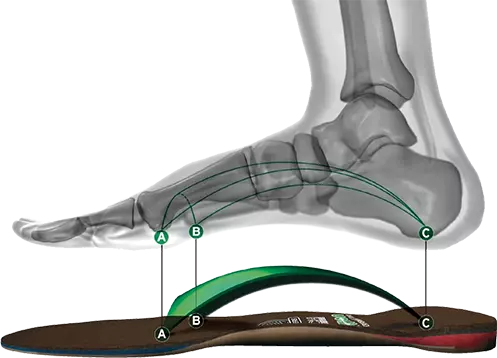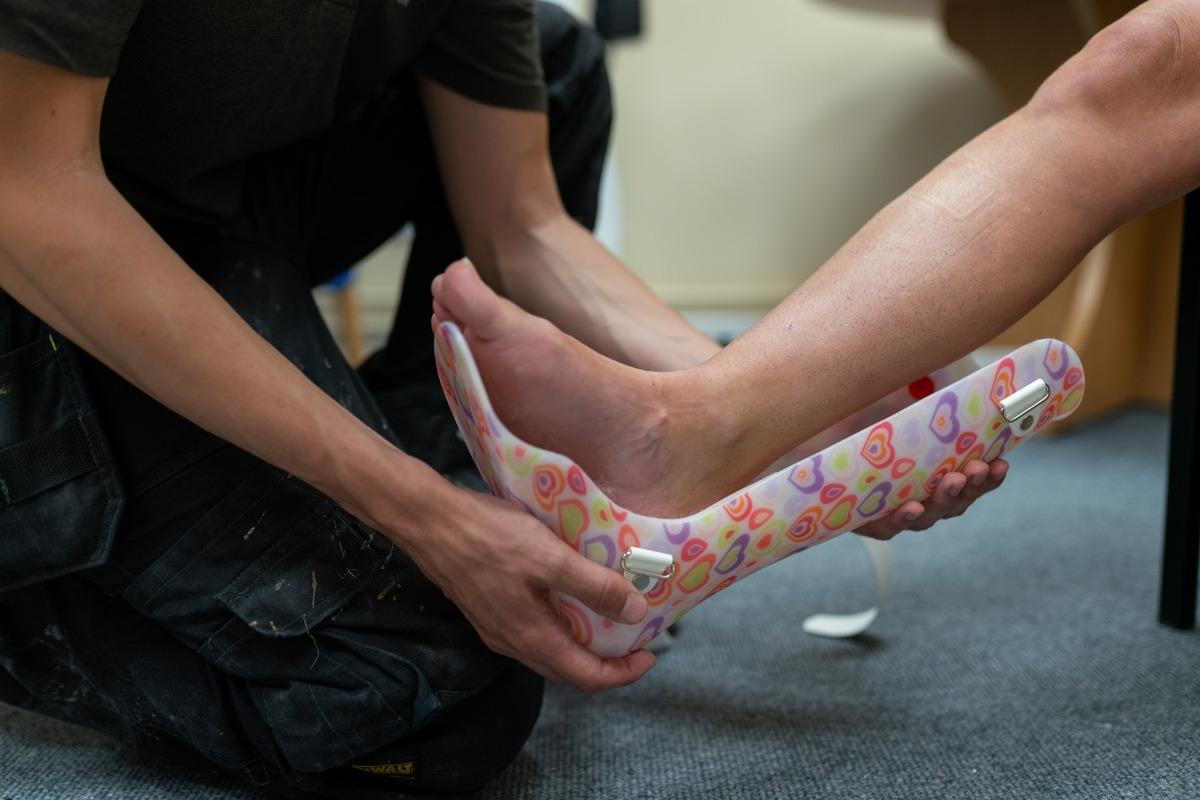Custom Ski Boot Fit Services Lafayette CO
Cold toes in ski boots is a typical issue faced by skiers, affecting their comfort and total performance on the slopes (Boot Fitting Instructions for Beginners Nederland CO). Warmth is essential for an gratifying snowboarding experience, and cold toes can diminish the joys of gliding down a snow-covered mountain. Understanding the reasons behind cold feet in ski boots and techniques to combat it could possibly make a major difference in your skiing adventures
Ski boots are designed to supply the support needed for skiing however may additionally be a source of discomfort. A tight fit, whereas essential for control, can limit blood circulate, resulting in chilly ft. This is particularly true if the boots are too small or not correctly fitted. Ensuring that ski boots are the right dimension is the first step in stopping cold toes.
Boot Fitting and Repair Services Westminster CO
Another factor contributing to chilly feet in ski boots is moisture. When your feet sweat contained in the boots, that moisture can lead to a chilling impact as the temperature drops. Skiing often entails high vitality expenditure, and the warmth generated contained in the boots can quickly be misplaced as sweat accumulates. Using moisture-wicking socks or boot liners can significantly alleviate this problem.
Insulation in ski boots performs a crucial function in keeping ft heat. Many boots include various degrees of insulation, and the selection of material can affect how well they preserve heat. Insulated boots are designed to keep warmth in, but deciding on the right degree of insulation in accordance with the local weather and individual preferences is important. Some skiers prefer extra layers, whereas others might find thicker liners too constricting.

Choosing the proper socks is just as crucial as deciding on the right boots. Thick, bulky socks can impede circulation, resulting in cold ft in ski boots. Opting for skinny, high-performance ski socks made from materials designed to wick moisture might help hold feet warm. Additionally, keep away from cotton socks as they retain moisture and contribute to cooling down.
Another often-overlooked side is how one clothes for a ski outing. A complete layering system is vital. For ski journeys, maintaining the complete physique warm ensures that extremities, just like the feet, keep warm as properly. Investing in high quality base layers, mid-layers, and outerwear can help optimize body temperature and circulation.
How Tight Should New Ski Boots Be? Lyons CO
Using foot heaters or heated insoles can be notably efficient for those vulnerable to chilly feet. These devices provide an additional heat source and could be present in varied varieties, from disposable chemical warmers to rechargeable battery-operated options. They might help delay comfort all through the day on the slopes.
Adjusting the way you fasten your boots can even make a major difference. Ski boots should be cosy but not overly tight. A too-tight fit can constrict blood flow, leading to cold ft. Learning the means to correctly adjust the buckles can help achieve a comfortable fit that balances heat and performance.
Take note of how long you spend standing still versus skiing. Cold toes are often exacerbated by inactivity. During breaks or while waiting in lines, feet tend to chill down considerably. Making an effort to maintain transferring, even when ready, may help keep warmth.
Diverse Ski Boot Fitting Approaches Louisville CO
Plan your breaks correctly. When taking a break, find a warm spot to rest. Stamping your feet or doing simple workouts can keep your blood circulating and prevent chilly toes in ski boots. Remaining conscious of your physique's temperature can guide well timed interventions to maintain warmth locked in.
Remember that selecting the best ski resort and circumstances also can affect how chilly ft really feel. Some places are recognized for their biting winds and lower temperatures. More protected ski areas with sunnier situations can provide a better skiing expertise. Thus, the selection of skiing location can indirectly influence how cold or heat your toes really feel all through the day.
Finally, staying hydrated is crucial. When the body is well-hydrated, circulation improves, which is essential for maintaining warmth. It’s simple to neglect to drink water while involved in activities, particularly in cold weather, however making a acutely aware effort to remain hydrated can have vital benefits.

Addressing chilly ft in ski boots usually includes trial and error, adapting gear and methods to search out the perfect solution for individual wants. Every skier is completely different, and what works for one particular person might not work for another. It’s important to experiment with varied socks, boot types, and layering strategies to search out the most effective mixture for oneself.
The Evolution of Boot Fitting Techniques Firestone CO
Ultimately, enjoying skiing to the fullest requires attention to the little issues that impact comfort and performance. Understanding the causes of chilly ft in ski boots and implementing strategies to forestall it can rework a chilly ski day into an exhilarating experience. By preserving ft warm, skiers can concentrate on soaking in the fantastic factor about the mountains and the joys of the ride.
Cold toes shouldn't be a recurring challenge however quite an opportunity for skiers to refine their setup and techniques. Emphasizing warmth and comfort ensures a extra enjoyable day on the slopes, allowing for longer and more fulfilling runs. Each skier can take proactive steps to mitigate the chilliness, turning skiing right into a joyous winter adventure somewhat than a battle towards the cold.
As the season unfolds, keep in thoughts that snowboarding is about enjoying the mountains, the contemporary air, and the thrill of gliding on snow. Keeping chilly ft at bay enhances each side of the experience, permitting for a concentrate on technique and delight rather than discomfort.
Properly Fit Ski Boot Feel Nederland CO
Finding joy in snowboarding is possible by addressing every thing from boot fit to sock choice, layering, and hydration. By prioritizing these components, skiers can ensure they've the right measures in place in opposition to chilly ft, permitting every journey down the slope to be as exhilarating as intended.
- Proper fit of ski boots is crucial; an extreme amount of room can result in chilly ft as a outcome of insufficient blood circulation.
- Insulating footbeds created from materials like gel or specialised foam can improve warmth by offering thermal safety.
- Toe warmers or heated insoles are efficient accessories to fight chilly feet, particularly in extraordinarily low temperatures.
- Keeping feet dry is essential; moisture from sweat can result in significant cooling, so moisture-wicking socks are beneficial.
- Choosing the proper socks, typically produced from merino wool or artificial blends, can significantly improve heat and luxury.
- Periodically taking breaks allows for foot movement and circulation, serving to to alleviate numbness and enhance warmth.
- Ensure that ski boots aren't overly tightened, which might limit blood flow and contribute to chilly sensations.
- Tuning the boot’s insulation stage primarily based on weather situations can hold ft hotter; consider models with adjustable features.
- Using ski boot heaters or foot warmers can provide a constant supply of warmth throughout lengthy outings on the slopes.
- Familiarizing oneself with layering techniques for ski gear also can assist in stopping cold feet by maintaining general physique warmth.undefinedWhat causes chilly toes in ski boots?
Ski Boot Fit Tips for Comfort Broomfield CO
Cold ft in ski boots is typically brought on by poor circulation, insufficient insulation, or moisture throughout the boot. If your toes are chilly, it could mean your boots are either too tight, not warm enough, or not fitted properly.
How can I forestall chilly ft whereas skiing?
To prevent chilly feet, ensure your ski boots fit properly without being overly tight. Use moisture-wicking socks made from wool or artificial materials, and think about boot heaters or heated insoles for added heat.
10 Steps to a Perfect Boot Fit Brighton CO
Are ski socks important for keeping my feet warm?
Yes, ski-specific socks are designed to provide warmth while allowing moisture to flee. They are usually thicker round key areas just like the toes and shin, enhancing insulation with out compromising comfort.
Is it okay to put on two pairs of socks in ski boots?
Wearing two pairs of socks can really restrict circulation, leading to colder feet. It’s better to choose a single, well-fitted moisture-wicking sock designed for skiing.
Boot Fitting 101 Essentials Thornton CO
What ought to I do if my ft get cold while skiing? (Advice for First-Time Ski Boot Buyers Golden CO)
If your feet become chilly, take a break to warm them up. Remove your boots for a couple of minutes, wiggle your toes, and contemplate including foot heaters or transferring to a warmer setting, if attainable.
Ski Boot Sizing Guidelines Wheat Ridge CO
Can boot liners help with cold feet?
Yes, high-quality boot liners can significantly improve insulation and warmth. Consider custom or heat-moldable liners that conform to your foot, enhancing both comfort and thermal administration.
How necessary is boot slot in stopping cold feet?
A proper boot fit is crucial for preventing chilly ft. Boots ought to be comfortable but not overly tight, allowing for good circulation while preserving heat contained. Poor fitting can result in pressure points, proscribing blood flow.
Advice for First-Time Ski Boot Buyers Wheat Ridge CO
Do the type of ski boots have an result on warmth?
Absolutely. Insulated or high-performance ski boots often provide better thermal safety. Research the particular options of trainers, as some models prioritize warmth along with performance.
Ski Boot Fitting Supplies List Firestone CO
Should I be concerned about moisture in my ski boots?
Yes, moisture can contribute to cold feet. Always dry your boots completely after each use, and consider using waterproof boots or gaiters to keep snow and moisture out whereas snowboarding.
What are some signs that my ski boots are too tight?
Best Ski Boot Fitting Practices Loveland CO
Signs that your ski boots are too tight embody tingling or numbness in your toes, chilly ft, or noticeable discomfort when sporting them - How-To Guide for Ski Boot Fitting Firestone CO. If you experience any of those, contemplate getting an expert fitting or adjusting the boot measurement
from this source go to website